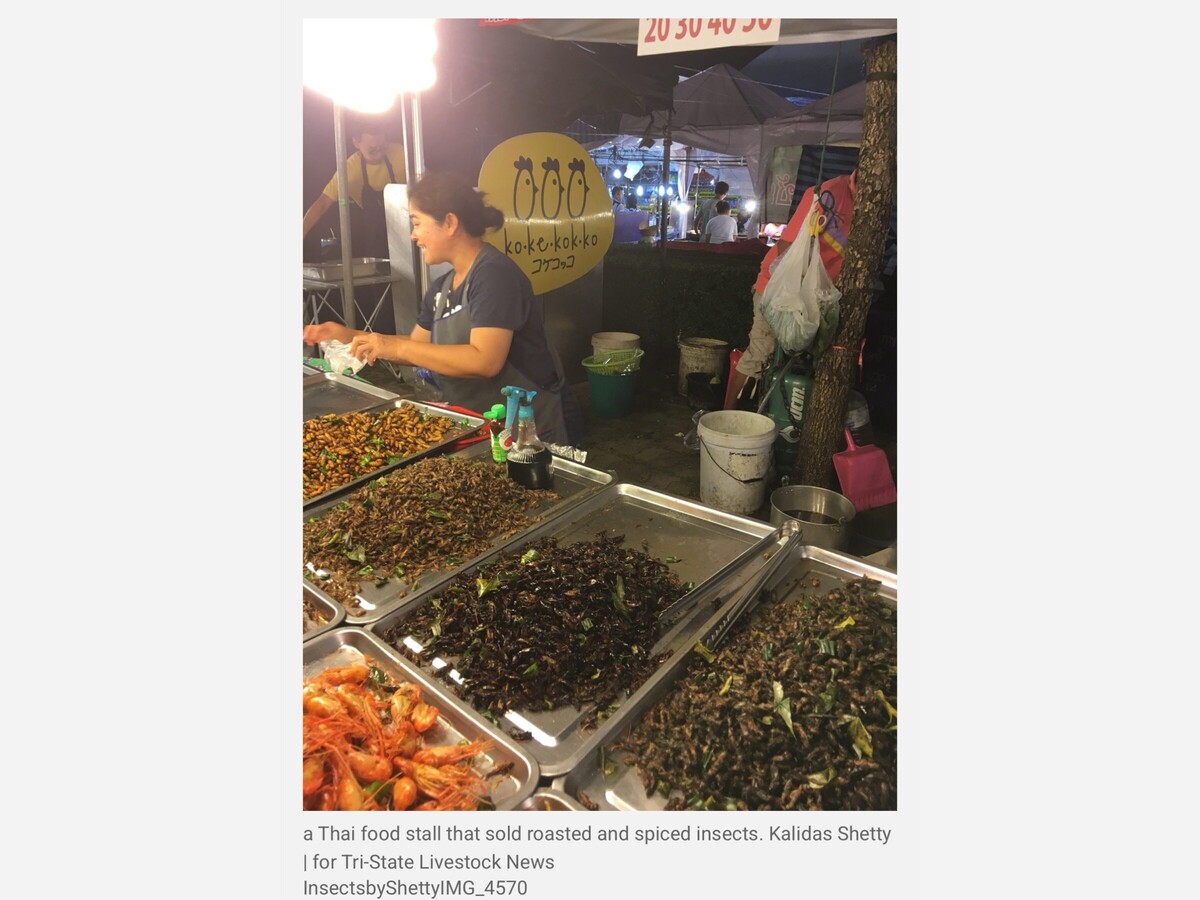Image


A 2023 study projects the edible insect market to grow to a $6 billion worldwide market by 2027.
The study suggests that the reason for growth is there are increasing food shortages around the world with population growth, so insects are a cost-effective way to feed the growing global population. And secondly, the report suggests that insects are more environmentally friendly than our current animal protein options.
Some global facts concerning insect food production. Currently, 1 trillion to 1.2 trillion insects are raised on farms annually for food and animal feed.
The countries that farm the most insects in the world are Thailand, France, South Africa, China, Canada, and the United States.
Insects are currently raised as a food source for three groups of consumers — humans, companion animals, and farmed animals. Although insect consumption is a relatively novel phenomenon in the US and Europe, over two billion people eat insects weekly worldwide (Van Huis et al. 2013), and insect-eating has long been a major part of human culture. However, the majority of these insects are likely collected from the wild.
Insects raised for human consumption are generally sold either whole, as a powdered additive, or in premade products. Examples include whole crickets, cricket flour, or a nutritional bar that incorporates cricket flour. Relatedly, a secondary industry exists of producers of insect foods, where the producers purchase powder from a farmer and produce packaged foods. Very few insects are sold at restaurants or otherwise prepared for immediate eating in the US, Canada, and Europe. There are some legal hurdles to selling insects at restaurants.
The industry is currently excited about using insect meal as a replacement for fishmeal, which is a product made from ground wild-caught fish that is typically fed to fish and other animals (FAO 2016). A study funded by the Food and Agriculture Organization of the UN found that 25% to 100% of fishmeal could safely be replaced by insect meal (Makkar et al. 2014).
Global fishmeal production was 15.8 million tonnes in 2014 (FAO 2016). As an example, we might reasonably expect insect meal to replace 25% of global production, or 3.95 million tonnes. Agriprotein, one of the world’s largest producers of insect meal, produces a fishmeal replacement made from black soldier fly larvae. A post-slaughter black soldier fly larva ground into insect meal weighs between 0.05g and 0.1g. This suggests that if black soldier fly larvae replaced 25% of global fishmeal, it would cause somewhere between 40 trillion and 80 trillion deaths. Given that between 500 billion and 1.1 trillion fish are already killed for fishmeal (Mood & Brooke 2019), replacing 25% of the world’s fishmeal with insects would cause 39 trillion to 79 trillion additional deaths, or 180 to 540 times as many deaths.
As a further demonstration of the potential scale of insect farming, Protix, a major producer, estimates that 30 million to 50 million tonnes of feedstocks could be replaced by insect protein, representing hundreds of trillions of additional insect lives and deaths (Protix 2020).
All of this then leads to no surprise that Tyson one of the world largest meat processing corporations is entering the insect market.
Tyson Foods announced a strategic investment with insect protein startup Protix to boost the presence of insect ingredients utilized in the food system, the company said in a statement. Tyson said it will acquire a minority stake in the company, but financial terms were not disclosed.
The meat giant said it plans to construct an ingredient facility in the U.S. with Protix that will “upcycle food manufacturing byproducts into high-quality insect proteins and lipids,” for use in pet food, aquaculture, and livestock production.
The agreement aims to combine Tyson’s ability to widely scale products with Protix’s insect protein technology to meet the growing demand for the ingredients.
A decade from now, what will the food on your plate look like? Will it be a steak and baked potato, or will it be a pasta dish with grasshoppers?
Today, 70 percent of global protein comes from legumes, specifically, many types of nitrogen fixing high protein pulses (including beans), according to Kalidas Shetty, founding Director of the Global Institute of Food Security & International Agriculture; Professor of Plant Science; and Associate Vice President for International Partnerships & Collaborations, North Dakota State University.
As modern food processing has evolved and mass food production became more common, food safety standards were established from farm to table. The Pure Food & Drug Act of 1906 and the Food Additives Amendment of 1958 set guidelines for food safety and what constitutes food in the U.S. However, these regulations were built on plant and animal foods, not considering insects, according to Shetty.
In the U.S., insects are allowed for human consumption, although they’re not approved or regulated by the Food & Drug Administration. Historically, insects have been treated like defects found during the food production process, according to Syers. Because insects are regarded as such according to current regulations, insects must be limited in food here in America.
Most of FDA’s attention, however, has not been focused on regulating insects as human food, but rather on regulating insects as “filth,” according to The Regulatory Review.
If the FDA were to recognize and regulate insects as food, it may help to change the perception of insects in the U.S. and that very issue is now on the radar of the FDA and legislative leaders to make happen as the trends evolve of insects as a food staple.
Stay tuned…